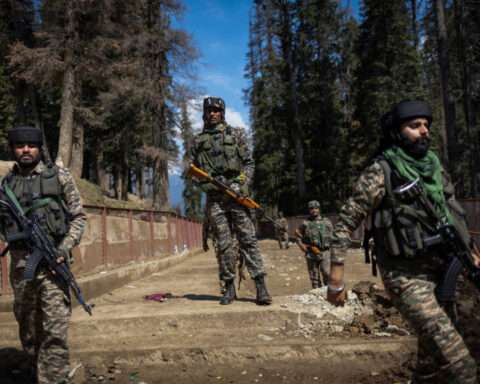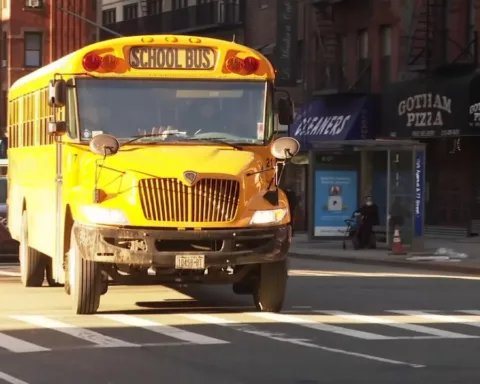NEW DELHI, December 16, 2020 — This is the second operation in a programmatic series of two.
The first operation of $750 million was approved in May 2020. It enabled immediate cash transfers to about 320 million individual bank accounts identified through pre-existing national social protection schemes under the Pradhan Mantri Garib Kalyan Yojana (PMGKY) and additional food rations for about 800 million individuals.
The Second Accelerating India’s COVID-19 Social Protection Response Program signed today will build on the shifts that the first operation has achieved and address some of the gaps. It will:
- Move away from a scheme-based system to a more integrated one;
- Build an adaptive social protection system through use of the government’s disaster response funds which can quickly provide support to excluded groups and deliver needs across states and communities, not only for COVID-19 but also for any future natural disaster or crises;
- Create a portable social protection platform in India to ensure food, social insurance and cash-support for migrants across state boundaries.
- Support the government’s targeted measures to identify and quickly trigger cash and social insurance benefits for the urban poor and unorganized sector workers currently outside program databases.
“The COVID-19 crisis has brought to the fore the risks that migrants and the urban poor face and the need for governments to strengthen preparedness for future disasters of this nature,” said C S Mohapatra, Additional Secretary, Department of Economic Affairs, Ministry of Finance. “This program will help further expand and deepen the coverage of India’s social protection systems by helping these vulnerable groups in urban and peri-urban areas across the country,” he added.
The agreement was signed by C S Mohapatra, Additional Secretary, Department of Economic Affairs, Ministry of Finance on behalf of the Government of India and Sumila Gulyani, Acting Country Director, India on behalf of the World Bank.
Early results from tracking the first operation through a representative household survey across India highlights the strengths and challenges of India’s social protection system.
Highlights from first operation approved in May 2020: Between May and August 2020, 84 percent of India’s poorest households (based on consumption measures) received at least one benefit under the PMGKY. While food delivery is impressive at scale – 77.5 percent of poorest households received food grains – cash transfers remain a challenge. Within cash programs, transfers into the Prime Minister’s Jan Dhan Yojna (PMJDY) bank accounts reached most families—nearly 80 percent of those enrolled in PMGKY cash transfer programs received benefits. However, dynamic targeting and registration in program databases remains a chief constraint in accessing cash for a large number of poor households.
“In face of the Covid-19 pandemic, Government of India has been actively strengthening the nation’s social protection system. In support of this process, the first operation by the World Bank followed Government’s lead to scale up pre-existing programs for emergency relief,” said Junaid Ahmad, World Bank Country Director in India. “This second operation will complement the expansion of India’s safety net programs to create a portable social protection platform ensuring food and cash support for poor households, urban migrants, and unorganized sector workers across state boundaries.”
Given the continent-like size and heterogeneity in India, the post COVID-19 economic shocks are likely to manifest itself differently at the sub-national, community and household levels. The impacts in India will be particularly sharp given that the workforce is predominantly informal and nearly half the households are vulnerable. The COVID-19 crisis has brought to the fore the risks that migrants and the urban poor face as social assistance programs in India largely target rural populations without portability across state boundaries.
“Most social protection schemes operating in modern India are designed for a rural, agrarian and chronically poor country. That India now only exists in pockets. Even prior to COVID-19, India needed to pivot its social protection system to address the needs of a more urban, mobile and diverse population where the risks are related to climate, urbanization and migration. The onset of the pandemic has escalated the urgency of this reform agenda,” said Qaiser Khan, Lead Economist and Shrayana Bhattacharya, Senior Social Protection Economist and World Bank’s Task Team Leaders for this project.
The new operation will allow flexibility for state governments to cater to their contexts, while ensuring that the needs of migrants, informal workers and the urban poor are addressed. The proposed reforms will allow states to access flexible funding from disaster response funds to design and implement appropriate social protection responses to COVID-19 and future disasters. Given that larger shares of COVID-19 cases in India are currently in urban and peri-urban areas, geographically targeted support to these hot-spot districts will help deepen social protection coverage in urban areas.
The program was prepared in collaboration with the Asian Development Bank (ADB), Agence Française de Développement (AFD) and Kreditanstalt Fur Wiederaufbau (KfW).
The $400 million credit is from the International Development Association (IDA) – the World Bank’s concessionary lending arm. Check project documents for funding details.






